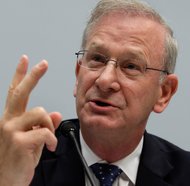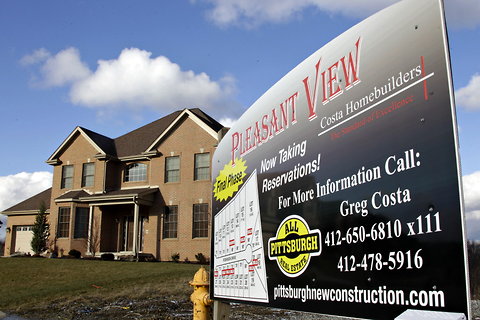If the rule goes into effect, it will require the nation’s largest banks, those whose parent companies have more than $700 billion in consolidated assets, to double the amount of capital they have on hand to cover losses. Under the new rule, for example, Chase Bank would have to hold capital equal to 6 percent of its assets, up from the current requirement of 3 percent. Its parent company, JPMorgan Chase, would also have to increase its capital from that level to 5 percent.
Even better, the design of the new capital requirement would be much harder for bankers to game. They did just that with other types of capital rules, such as those issued under the Basel regime, the international system devised by regulators and central bankers.
The proposal, which would raise what is known as a bank’s leverage ratio, was issued jointly by the Federal Deposit Insurance Corporation, the Federal Reserve Board and the Office of the Comptroller of the Currency.
Naturally, the financial sector hates it.
The proposal would “make it harder for banks to lend and keep the economic recovery going,” said Tim Pawlenty, president of the Financial Services Roundtable, in a statement. Not that the banks are lending with abandon now.
Increasing capital will most likely reduce these institutions’ returns on equity, a measure that many stockholders use to judge a bank and that banks’ boards use to calculate top executives’ bonuses.
At the moment, big banks are riding high. On Friday, JPMorgan Chase said its net income for the second quarter was $6.5 billion, up 31 percent from the same period of 2012. The six largest banks will enjoy an average increase of 20 percent in earnings during the second quarter, according to analysts’ estimates.
Over the next two months, regulators will receive and weigh public comments about their proposal. You can be sure that, from now to then, the nation’s largest banks will do whatever they can to weaken it.
JUST getting the proposed capital rule out the door seems to have been tough, judging from one regulator’s public comments. As Jeremiah Norton, a director at the F.D.I.C., said in a statement on Tuesday: “It should not have been as difficult as it has been for the agencies to come together on today’s leverage-ratio proposal, which hardly seems like a seismic shift in capital requirements and represents an attempt to address one of the core causes of the financial crisis.”
But seismic it is to the nation’s biggest bankers. As soon as the proposed rule came out, their representatives began warning about the dire effects it would have on the economy.
Mr. Pawlenty, the former Minnesota governor and candidate for the Republican presidential nomination, trotted out that time-honored claim that is used to undercut so many regulations — that the higher capital rule was a bad idea because it would put American banks at a competitive disadvantage to foreign institutions that needn’t abide by it.
This, by the way, was the same argument that banks made just before the financial crisis. Back then, they were arguing that United States regulators should join their European counterparts in relying solely on the Basel II rules, and not impose additional capital requirements. The big banks liked those rules because they leaned heavily on bankers’ own, rosy risk models and allowed the institutions to compute capital based on the supposed risks in various assets.
This so-called risk-weighting approach was an abject failure. For example, the assumptions characterized the sovereign debt of Greece as risk-free, requiring that banks set aside no capital against those holdings for possible losses. The risk-weight system also determined, incorrectly, that highly rated mortgage securities fell low on the risk scale.
That’s what’s so beneficial in the leverage-ratio rule proposed last week: it allows for much less subjectivity in analyzing risks on a bank’s balance sheet. It also has the benefit of including more of a bank’s off-balance-sheet holdings — like derivatives — in the capital calculation. That helps give investors a truer picture of a bank’s financial position.
“The reason our banks, with their much larger exposure to toxic mortgage securities, fared better than their European counterparts during the crisis was that the U.S. regulators had already required them to meet a leverage ratio on top of the Basel requirements,” said Joshua Rosner, an analyst at Graham Fisher in New York. “Where other countries merely used Basel — which proved to be a loose belt — we required suspenders as well.”
If the new rule goes into effect, it will trump the heavy reliance on risk-weighting that remains central to the Basel rules. Once again, that would put United States banks in a better position than their foreign peers to survive future downturns.
“The United States has the opportunity to lead the world in bringing forward a financial system that is sounder in the long run,” said Thomas M. Hoenig, vice chairman of the F.D.I.C., in an interview last week. “With stronger capital, banks still have the ability to make loans, but if they do have losses they can absorb those losses without imploding the economy.”
THE regulators concede that increasing capital at these large and powerful institutions may increase the costs of borrowing. But they note that the societal benefits to increased capital — fewer expensive bailouts — will far outweigh the possible rise in borrowing costs.
Over the next two months, the regulators proposing this rule will no doubt encounter a lobbying buzz saw. Mr. Hoenig said he and his colleagues were bracing for that. Bankers, after all, prefer things just the way they are. They can load up on leverage to take risks and reap the rewards. But when losses abound? Well, they’re the taxpayers’ problem.

Article source: http://www.nytimes.com/2013/07/14/business/bankers-are-balking-at-a-proposed-rule-on-capital.html?partner=rss&emc=rss


